(for Part 2 Chasing Polar Bears click here and apologies for the formatting glitches, I haven’t stopped travelling long enough to fix them)
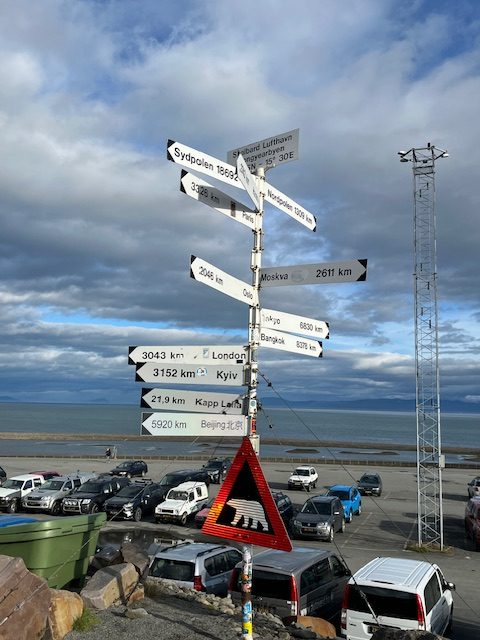
There’s warning about polar bears on the tourist information boards around the capital, Longyerbean. They are also on town maps. And as you leave the airport. There are more warnings in your hotel room.
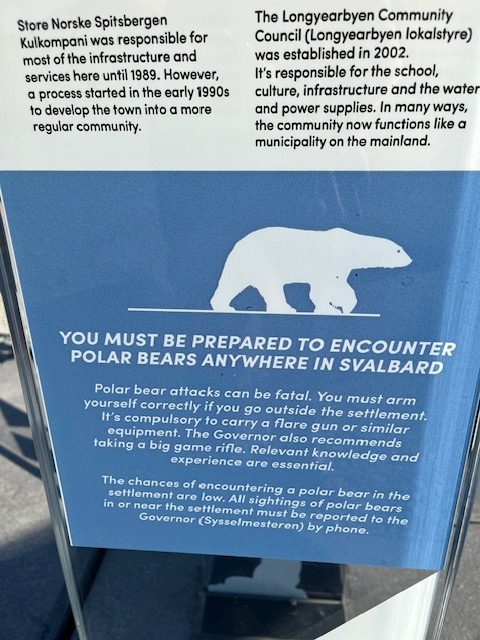
There’s a heavy-duty fence around the day-care centre. It isn’t to keep kids in, it’s to keep the bears out.
Because they have been known to appear in Longyearbyen, the sparse population centre that at least some locals call ‘the city’. But our guides say they – real polar bears – can appear ‘anywhere, anytime’. Seriously.
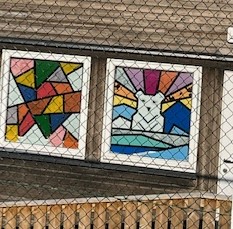
The polar bear is everywhere as a logo, too. In parking lots and on the kindergarten walls.
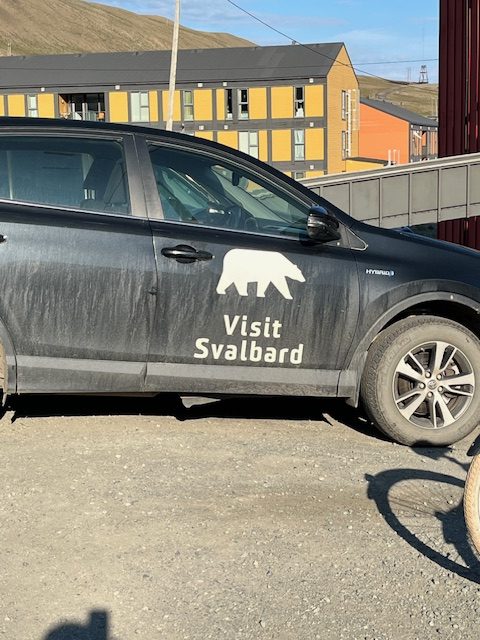

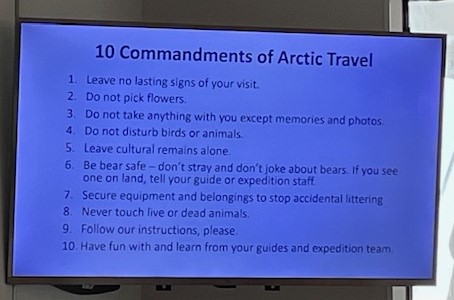
Once we are on the ship, the MV Greg Mortimer, there’s the usual ship safety and evacuation briefing. There’s a briefing on how to get in and out of the zodiac inflatables that we’ll use each day to go on ‘expeditions’. Then there is a Polar Bear briefing. Seriously.
On our ship, there’s a Firearms Manager. Seriously. He is one of ten guides aboard trained in the use of firearms. Every time we land on Svalbard – as opposed to being on the water, where it’s safe — we will have at least two guides with each group who are armed with rifles, which they carry in their backpacks. One at the front and one at the rear. If a bear comes within 30 metres of the group our guides must, by law, kill it. If it is 100 metres away they may try to use a flare to try to scare it off. But we are not (knowingly) allowed to be within 200 metres of a polar bear on land. Next January that regulations – one of many in the Arctic – changes to 300 metres.
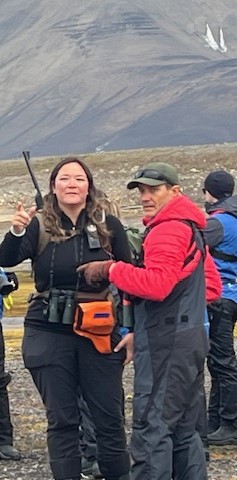
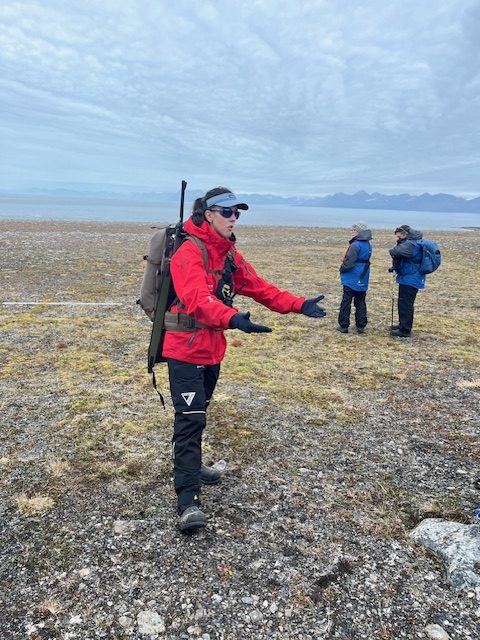
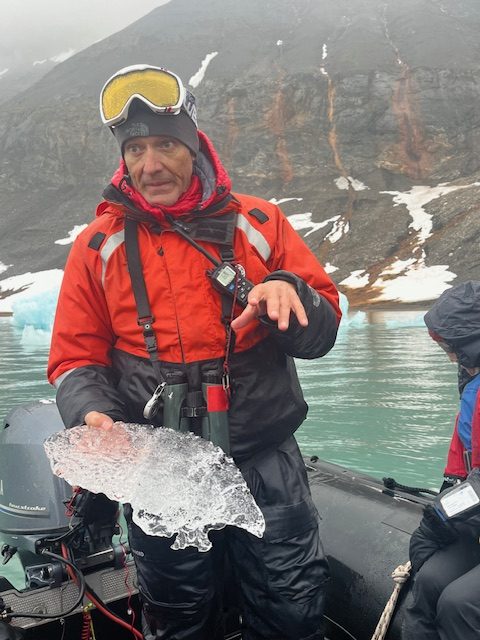
Christophe, a Frenchman who heads up the Expedition Team, is my guide on day one. He leans overboard to pick up a large slab of ice and points out that the sound of popping and crackling that’s all around us is air escaping from the ice. The air is, most likely, thousands and thousands of years old and could even be a different make up to the air of today. With more or less oxygen, for example. Wow, seriously?

On day two – I’m only counting full ship days – we go ashore. They have issued us with ‘muck boots’, heavy duty lined gumboots that nearly top my knees. We are advised to wear two pairs of socks for warmth (though at the height of summer, it really ain’t all that cold when it isn’t wet).
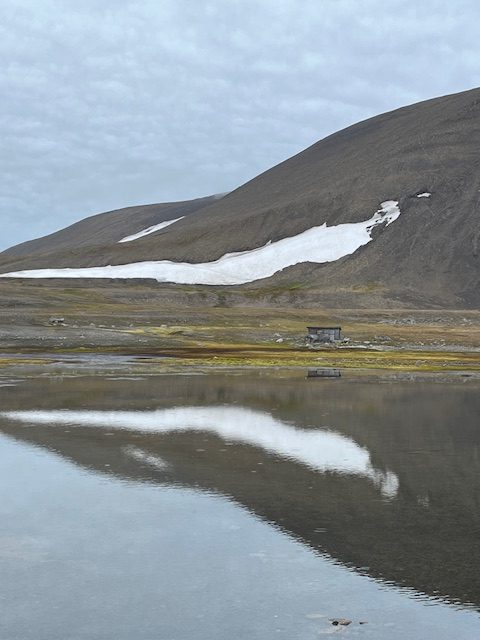
To get off a zodiac we sit on the rubber gunwhale and swing our legs over it and into seawater that comes more than halfway up my shins. I am grateful for the muck boots that are now welted with seaweed that wades with me up the fine dark sand.

A little lake is flanked by two huts made of bare wooden planks. Planks also lie strewn on the rocky slope. Not driftwood – we will see much of that later – but the remnants of an old huts whose occupants will have been either sealers or scientists. Probably the latter, guessing by the age of the wood. Sealing stopped a while ago but scientists are still enamoured of Svalbard. (A few days later I jokingly said ‘that looks like a tripod’ – it was perched on a cliff-side – only to be told that’s exactly what it was. The tripod with, presumably, a camera or other device was sitting in ‘the field’ so scientists can collect data remotely.)
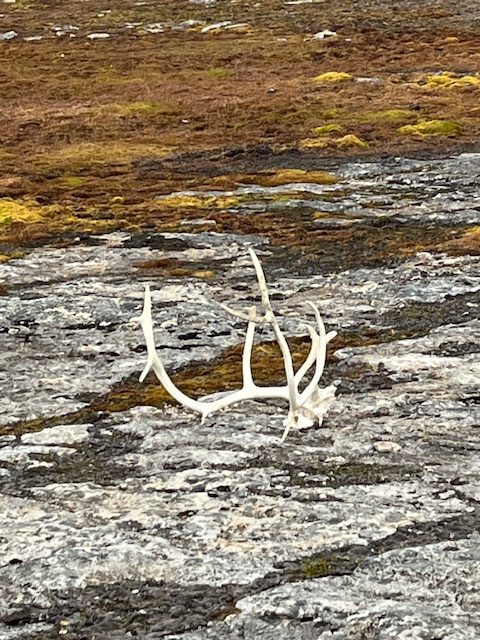

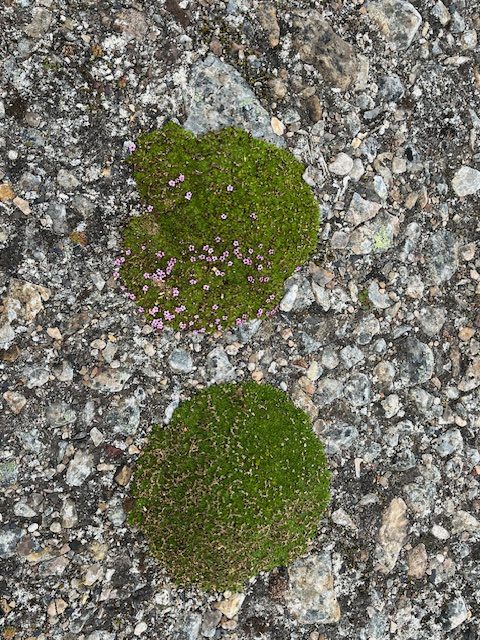
By the lake, spongy yellow fungi stands low in the boggy, peaty tundra. We see wildflowers that appear too delicate to survive in the tropics let alone the elements here at 70+ degrees latitude. There are more kinds and colours of moss than I can count. A raindeer has left his antlers on the stony ground. The thirty of more of us on the ‘medium’ level hike jostle around, vying for the prize shot. It’s a good thing the taking of photographs does not deplete the Earth’s resources because there wouldn’t be anything left after an afternoon of our ‘expedition’ visiting.
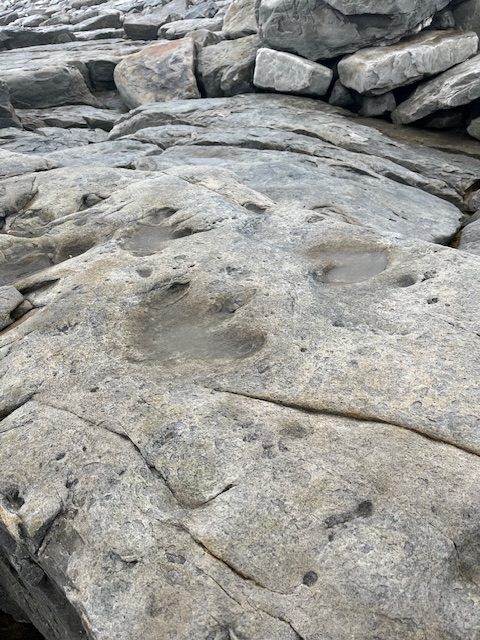
We are promised dinosaur prints but at first our leaders stride straight past them and we have to double back. There they are, round indents with three sharp points at one end. They are, we are told, from an ornithopter. Hang on, isn’t that a type of helicopter? Maybe I wasn’t paying attention. Some sort of giant raptor anyway.
Whenever we’re on land, a staff member patrols the shore in a zodiac, looking for polar bears. Another couple scout along the outer edges of our groups, their binoculars sweep left to right along the plains and up and down the ridges. By the end of our time aboard, the only polar bears we saw were from boats. But you’ll need to go to Part Two for that.

(Thanks to fellow passenger Robert K for the great cover photo of the polar bear, mine look more like this one on the left.)
